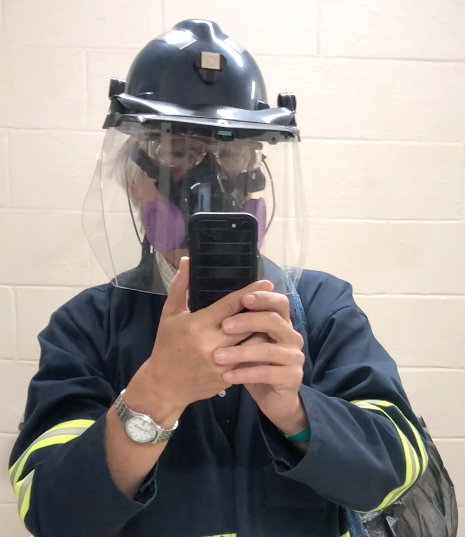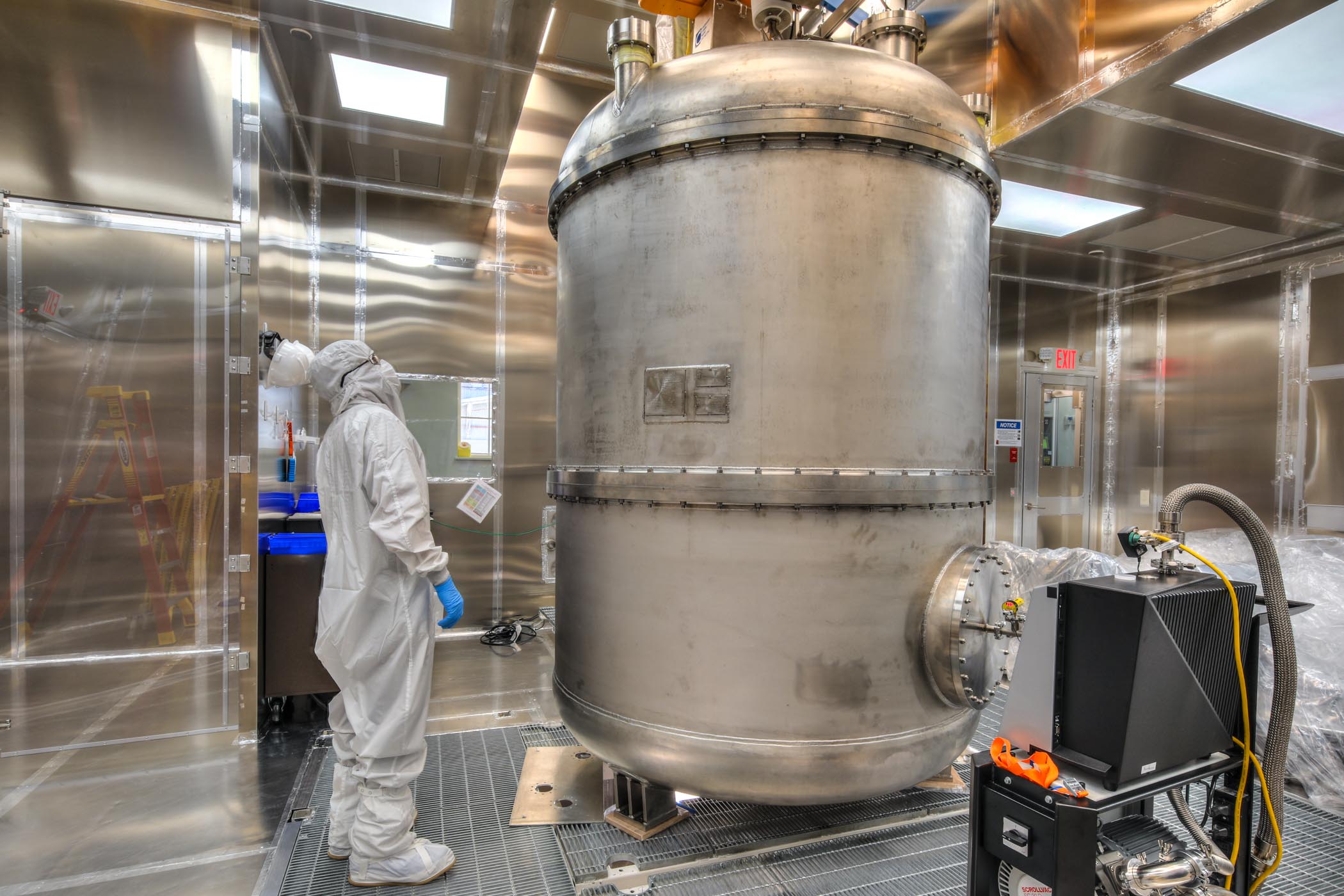Kevin Lesko, a spokesperson for the LUX-ZEPLIN (LZ) dark matter search experiment, discusses dark matter and LZ during a recent visit to Sanford Lab. (Credit: Video production by Marilyn Sargent/Berkeley Lab; Q&A video footage filmed by Matt Kapust/Sanford Lab; other Sanford Lab video footage by Kevin Lesko/Berkeley Lab)
Scientists, including researchers from Berkeley Lab, are working on the final stages of LUX-ZEPLIN (LZ), an underground experiment at Sanford Lab in South Dakota that will hunt for dark matter.

Kevin Lesko, LUX-ZEPLIN spokesman, suits up for a trip underground at Sanford Lab. (Credit: Kevin Lesko)
Kevin Lesko, a spokesperson for LZ and senior physicist at the U.S. Department of Energy’s Lawrence Berkeley National Laboratory (Berkeley Lab), shares his insights about the mysteries of dark matter, what we know about it, and what we hope to learn about it from LZ, in this Q&A interview at Sanford Lab. The video is part of Berkeley Lab’s celebration of Dark Matter Day 2020.
Berkeley Lab is the lead institution for the LZ experiment, which is supported by an international collaboration.
Dark Matter Day, marked by events on and around Oct. 31, is an annual, international celebration of the search for dark matter. Launched in 2017 by the community of particle physics communicators associated with Interactions.org, Dark Matter Day provides an opportunity for the world’s scientific community to educate the public about dark matter, and about how and why we are searching for it.
Dark matter accounts for about 85 percent of the universe’s total mass, yet we don’t know what it is made of — we know it’s there because of its gravitational effects on visible matter.
Follow the #DarkMatterDay hashtag and @DarkMatterDay account at Twitter to find out about other Dark Matter Day events around the globe.
More:
- VIDEO: “The Unsolved Mystery of Dark Matter,” Oct. 19, 2020.
# # #
Founded in 1931 on the belief that the biggest scientific challenges are best addressed by teams, Lawrence Berkeley National Laboratory and its scientists have been recognized with 14 Nobel Prizes. Today, Berkeley Lab researchers develop sustainable energy and environmental solutions, create useful new materials, advance the frontiers of computing, and probe the mysteries of life, matter, and the universe. Scientists from around the world rely on the Lab’s facilities for their own discovery science. Berkeley Lab is a multiprogram national laboratory, managed by the University of California for the U.S. Department of Energy’s Office of Science.
DOE’s Office of Science is the single largest supporter of basic research in the physical sciences in the United States, and is working to address some of the most pressing challenges of our time. For more information, please visit energy.gov/science.
